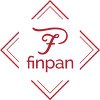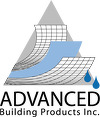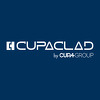
Northwest Territories Association of Architects
The Northwest Territories Association of Architects is mandated by the Architects Act to regulate the practice of architecture, govern the profession, and establish and maintain standards of knowledge, skill, care and professional ethics among authorized practitioners to serve and protect the interests of the public.
Click to Learn More About the Northwest Territories Association of Architects
Visit www.nwtaa.ca and Join Now!
Displaying 126 - 150 of 619 results.
FIRST PREV [76-100] [101-125] [126-150] [151-175] [176-200] NEXT LASTScan this code with your mobile device camera to take this page on-the-go!

https://redirect.aecdaily.com/s10851/www.aecdaily.com/course/574010

 Upward-acting commercial sectional door systems can be a major contributor to controlling energy costs in buildings. This course evaluates the materials and construction of various door types and discusses the selection criteria and operation features that are available to enhance door performance for a range of applications.
Upward-acting commercial sectional door systems can be a major contributor to controlling energy costs in buildings. This course evaluates the materials and construction of various door types and discusses the selection criteria and operation features that are available to enhance door performance for a range of applications.
Scan this code with your mobile device camera to take this page on-the-go!

https://redirect.aecdaily.com/s9727/www.aecdaily.com/course/846064

 A high-performance building must address four major environmental loads: water, air, vapor, and thermal. The location of the required control layers is critical to effective envelope design. This course explores perfect/universal wall design and the use of single-component insulated metal panels (IMPs) to provide all four control layers. Presented here are discussions on the building envelope, rainscreens, perfect wall design, and IMPs, and more specifically, how to incorporate IMPs into engineered façade systems.
A high-performance building must address four major environmental loads: water, air, vapor, and thermal. The location of the required control layers is critical to effective envelope design. This course explores perfect/universal wall design and the use of single-component insulated metal panels (IMPs) to provide all four control layers. Presented here are discussions on the building envelope, rainscreens, perfect wall design, and IMPs, and more specifically, how to incorporate IMPs into engineered façade systems.
Scan this code with your mobile device camera to take this page on-the-go!

https://redirect.aecdaily.com/s403098/www.aecdaily.com/course/1123475

 This course discusses the code requirements for thermal and ignition barriers for spray polyurethane foam, the testing required, code requirements for vapor retarders depending on climate zone, and how these coatings are installed.
This course discusses the code requirements for thermal and ignition barriers for spray polyurethane foam, the testing required, code requirements for vapor retarders depending on climate zone, and how these coatings are installed.
Scan this code with your mobile device camera to take this page on-the-go!

https://redirect.aecdaily.com/s13907/www.aecdaily.com/course/905632

 Bathrooms can be dangerous places for people with and without physical limitations. The prevalence of bathroom falls amongst persons of all age groups and levels of ability has driven the trend of accessible shower design. Presented here is an overview of how curbless shower pans are designed for durability and safety, and to meet the needs of accessible design. Included are discussions on traditional and modern shower pan design and installation methods and their associated drawbacks and benefits. Industry resources and standards are outlined.
Bathrooms can be dangerous places for people with and without physical limitations. The prevalence of bathroom falls amongst persons of all age groups and levels of ability has driven the trend of accessible shower design. Presented here is an overview of how curbless shower pans are designed for durability and safety, and to meet the needs of accessible design. Included are discussions on traditional and modern shower pan design and installation methods and their associated drawbacks and benefits. Industry resources and standards are outlined.
Scan this code with your mobile device camera to take this page on-the-go!

https://redirect.aecdaily.com/s796052/www.aecdaily.com/course/823653

 Synthetic (artificial) grass, specifically designed for use with dogs, is a cost-effective solution that offers a clean, safe, and aesthetically pleasing environment for dogs. Presented here are the health, safety, performance, and cost benefits of installing synthetic grass specifically designed for dogs; its suitable applications; design considerations; installation factors; and maintenance guidelines.
Synthetic (artificial) grass, specifically designed for use with dogs, is a cost-effective solution that offers a clean, safe, and aesthetically pleasing environment for dogs. Presented here are the health, safety, performance, and cost benefits of installing synthetic grass specifically designed for dogs; its suitable applications; design considerations; installation factors; and maintenance guidelines.
Scan this code with your mobile device camera to take this page on-the-go!

https://redirect.aecdaily.com/s5089/www.aecdaily.com/course/1046540

 Sustainable design and green practices have raised consumer awareness about the potential dangers lurking in buildings and homes from products such as paints and coatings. Environmental sustainability has influenced architects and interior designers to approach their projects in ways that boost health, lower consumption of nonrenewable resources, and minimize waste. This course looks at the evolution of sustainable design, ways to measure the environmental impact of volatile organic compounds (VOCs), how paints and coatings can contribute toward satisfying LEED® credits, and how these products may play a role in designing for well-being.
Sustainable design and green practices have raised consumer awareness about the potential dangers lurking in buildings and homes from products such as paints and coatings. Environmental sustainability has influenced architects and interior designers to approach their projects in ways that boost health, lower consumption of nonrenewable resources, and minimize waste. This course looks at the evolution of sustainable design, ways to measure the environmental impact of volatile organic compounds (VOCs), how paints and coatings can contribute toward satisfying LEED® credits, and how these products may play a role in designing for well-being.
Scan this code with your mobile device camera to take this page on-the-go!

https://redirect.aecdaily.com/s932109/www.aecdaily.com/course/932135

 This course introduces accessibility from Canadian and US perspectives. It covers a few specific technical accessibility requirements and compares the differences when referencing Canadian or US design standards, such as the National Building Code of Canada (Canada's Model Code) or the Americans with Disabilities Act (ADA) (the United States accessibility regulation), while reinforcing the intent of good design that is not always outlined by a code or standard. The seven principles of universal design are also discussed.
This course introduces accessibility from Canadian and US perspectives. It covers a few specific technical accessibility requirements and compares the differences when referencing Canadian or US design standards, such as the National Building Code of Canada (Canada's Model Code) or the Americans with Disabilities Act (ADA) (the United States accessibility regulation), while reinforcing the intent of good design that is not always outlined by a code or standard. The seven principles of universal design are also discussed.
In order to download this course, a USD $35.00 fee must be paid.
Scan this code with your mobile device camera to take this page on-the-go!

https://redirect.aecdaily.com/s18206/www.aecdaily.com/course/920731

 Curved elements, such as walls, ceilings, columns, soffits, light covers, clouds, and arches have often been used to add interest to architectural designs. This course outlines conventional methods of framing curves in wood and steel, as well as new methods of framing using flexible track systems. Discussions include options for wall coverings and trims for curved surfaces.
Curved elements, such as walls, ceilings, columns, soffits, light covers, clouds, and arches have often been used to add interest to architectural designs. This course outlines conventional methods of framing curves in wood and steel, as well as new methods of framing using flexible track systems. Discussions include options for wall coverings and trims for curved surfaces.
Scan this code with your mobile device camera to take this page on-the-go!

https://redirect.aecdaily.com/s15243/www.aecdaily.com/course/928543

 Unfortunately, gun violence is a reality, and design strategies must be employed to ensure a suitable level of protection and safety. This course addresses bullet-resistant fiberglass composite panels and the need for architectural armoring. The course discusses ballistic material testing and standards, the types of ballistic materials available, and fiberglass composite panel applications and installation considerations.
Unfortunately, gun violence is a reality, and design strategies must be employed to ensure a suitable level of protection and safety. This course addresses bullet-resistant fiberglass composite panels and the need for architectural armoring. The course discusses ballistic material testing and standards, the types of ballistic materials available, and fiberglass composite panel applications and installation considerations.
Scan this code with your mobile device camera to take this page on-the-go!

https://redirect.aecdaily.com/s1104604/www.aecdaily.com/course/1120038

 People are captivated by birds, and for many, they hold intrinsic value. However, millions of birds collide with glass every year, significantly impacting avian populations. This course examines the ecological services that birds perform that impact human wellness and safety and reviews how bird-friendly glass can mitigate collisions. Various bird-friendly glass examples are also identified, and design guidelines and existing legislation mandating bird-friendly buildings is discussed.
People are captivated by birds, and for many, they hold intrinsic value. However, millions of birds collide with glass every year, significantly impacting avian populations. This course examines the ecological services that birds perform that impact human wellness and safety and reviews how bird-friendly glass can mitigate collisions. Various bird-friendly glass examples are also identified, and design guidelines and existing legislation mandating bird-friendly buildings is discussed.
Scan this code with your mobile device camera to take this page on-the-go!

https://redirect.aecdaily.com/s951401/www.aecdaily.com/course/1094326

 While natural wood has traditionally been viewed as an ideal material for decking boards and tiles, wood-plastic composite (WPC) has emerged as a durable, easy-to-maintain, and sustainable alternative. This course provides insights into the advantages of composite decking, especially fully capped products, and explores topics including its environmental benefits; contribution to occupant wellness and safety; resistance to fading, staining, and other potential defects that decking experiences; various applications; and attractive aesthetics.
While natural wood has traditionally been viewed as an ideal material for decking boards and tiles, wood-plastic composite (WPC) has emerged as a durable, easy-to-maintain, and sustainable alternative. This course provides insights into the advantages of composite decking, especially fully capped products, and explores topics including its environmental benefits; contribution to occupant wellness and safety; resistance to fading, staining, and other potential defects that decking experiences; various applications; and attractive aesthetics.
Scan this code with your mobile device camera to take this page on-the-go!

https://redirect.aecdaily.com/s671/www.aecdaily.com/course/985501

 The primary purpose of a roof is to provide shelter and protection; to do so effectively over the long term, proper drainage and ventilation are required. Presented here are the categories of metal roofing, the moisture- and noise-related issues associated with architectural metal roofs, the use of a three-dimensional drainage and ventilation mat as a solution to these issues, and best practices for incorporating a mat in metal and cedar roof assemblies.
The primary purpose of a roof is to provide shelter and protection; to do so effectively over the long term, proper drainage and ventilation are required. Presented here are the categories of metal roofing, the moisture- and noise-related issues associated with architectural metal roofs, the use of a three-dimensional drainage and ventilation mat as a solution to these issues, and best practices for incorporating a mat in metal and cedar roof assemblies.
Scan this code with your mobile device camera to take this page on-the-go!

https://redirect.aecdaily.com/s5023/www.aecdaily.com/course/899778

 Insulation can help increase overall energy efficiency, minimize the spread of fire, manage risks associated with moisture and mold, and improve occupant comfort. Choosing the right insulation and putting it in the right location is becoming one of the most important decisions in design, construction, and retrofit. Reviewed in this course are the features, benefits, and design and installation considerations related to mineral wool continuous insulation.
Insulation can help increase overall energy efficiency, minimize the spread of fire, manage risks associated with moisture and mold, and improve occupant comfort. Choosing the right insulation and putting it in the right location is becoming one of the most important decisions in design, construction, and retrofit. Reviewed in this course are the features, benefits, and design and installation considerations related to mineral wool continuous insulation.
Scan this code with your mobile device camera to take this page on-the-go!

https://redirect.aecdaily.com/s1078698/www.aecdaily.com/course/1097505

 Energy conservation and occupant well-being, comfort, and productivity are issues of increasing concern in building design. This course illustrates how radiant heating and cooling systems address these issues positively and efficiently. It encompasses the various types of systems available and how they can contribute to credit requirements in the LEED® v4.1 Building Design and Construction rating system and the WELL Building Standard™ version 2. System workings, design, aesthetic considerations, advantages, testing and measuring protocols, and installation procedures are reviewed, and the course concludes with several installation examples.
Energy conservation and occupant well-being, comfort, and productivity are issues of increasing concern in building design. This course illustrates how radiant heating and cooling systems address these issues positively and efficiently. It encompasses the various types of systems available and how they can contribute to credit requirements in the LEED® v4.1 Building Design and Construction rating system and the WELL Building Standard™ version 2. System workings, design, aesthetic considerations, advantages, testing and measuring protocols, and installation procedures are reviewed, and the course concludes with several installation examples.
Scan this code with your mobile device camera to take this page on-the-go!

https://redirect.aecdaily.com/s4459/www.aecdaily.com/course/808632

 Centralized mail and package delivery is often a last-minute consideration that causes confusion due to the various compliance and accessibility requirements needed to complete the installation. This course is designed to demystify the process by providing a clear explanation of several mailbox installation specifications, accessibility standards, and design strategies.
Centralized mail and package delivery is often a last-minute consideration that causes confusion due to the various compliance and accessibility requirements needed to complete the installation. This course is designed to demystify the process by providing a clear explanation of several mailbox installation specifications, accessibility standards, and design strategies.
Scan this code with your mobile device camera to take this page on-the-go!

https://redirect.aecdaily.com/s10851/www.aecdaily.com/course/890158

 Rolling doors are used in heavy-duty, medium-duty, and light-duty applications for a wide range of commercial, industrial, and construction environments. This course provides a review of the features, components, options, and applications of various types of commercial rolling door products.
Rolling doors are used in heavy-duty, medium-duty, and light-duty applications for a wide range of commercial, industrial, and construction environments. This course provides a review of the features, components, options, and applications of various types of commercial rolling door products.
Scan this code with your mobile device camera to take this page on-the-go!

https://redirect.aecdaily.com/s425610/www.aecdaily.com/course/1116104

 Now more than ever, public restrooms must provide users with a hygienic and safe experience that supports inclusivity, human health, and wellness. In this course, we explore how multistall public restrooms address users’ concerns about hygiene, safety, privacy, and efficiency through partitions, touchless fixtures, hand dryers, and more. We also discuss fulfilling WELL Building Standard™ v2 requirements by promoting public health and safety in restroom design.
Now more than ever, public restrooms must provide users with a hygienic and safe experience that supports inclusivity, human health, and wellness. In this course, we explore how multistall public restrooms address users’ concerns about hygiene, safety, privacy, and efficiency through partitions, touchless fixtures, hand dryers, and more. We also discuss fulfilling WELL Building Standard™ v2 requirements by promoting public health and safety in restroom design.
Scan this code with your mobile device camera to take this page on-the-go!

https://redirect.aecdaily.com/s12454/www.aecdaily.com/course/969706

 Exterior shading devices offer a number of advantages that contribute to a more sustainable building, including minimizing cooling costs, reducing peak electricity demand, and controlling glare. These benefits result in greater occupant comfort and improved productivity. This course provides a review of exterior aluminum shading device systems, including the components, finishes, and design and engineering considerations, as well as a discussion of how shading strategies contribute to LEED® certification.
Exterior shading devices offer a number of advantages that contribute to a more sustainable building, including minimizing cooling costs, reducing peak electricity demand, and controlling glare. These benefits result in greater occupant comfort and improved productivity. This course provides a review of exterior aluminum shading device systems, including the components, finishes, and design and engineering considerations, as well as a discussion of how shading strategies contribute to LEED® certification.
Scan this code with your mobile device camera to take this page on-the-go!

https://redirect.aecdaily.com/s525798/www.aecdaily.com/course/1028895

 Energy codes at the federal, state, and local levels increasingly focus on reducing energy consumption, saving consumers money, and reducing CO2 emissions. Whether new or recently updated, energy codes play an essential role in the buildings we design, build, and ultimately live, work, and play in. This course examines the lighting requirements and provisions of ASHRAE Standard 90.1-2019 and the 2021 International Energy Conservation Code ® , with a focus on plug and lighting control strategies for energy efficiency.
Energy codes at the federal, state, and local levels increasingly focus on reducing energy consumption, saving consumers money, and reducing CO2 emissions. Whether new or recently updated, energy codes play an essential role in the buildings we design, build, and ultimately live, work, and play in. This course examines the lighting requirements and provisions of ASHRAE Standard 90.1-2019 and the 2021 International Energy Conservation Code ® , with a focus on plug and lighting control strategies for energy efficiency.
Scan this code with your mobile device camera to take this page on-the-go!

https://redirect.aecdaily.com/s485236/www.aecdaily.com/course/1010952

 According to the U.S. Centers for Disease Control and Prevention (CDC), handwashing is one of the best and easiest ways to prevent the spread of germs. However, drying hands is just as important as washing them. This course introduces the reader to the main features of air knife hand dryers and discusses how their technical components, such as high-efficiency particulate (HEPA) filtration, touch-free operation, and fast dry times, contribute to their hygienic performance.
According to the U.S. Centers for Disease Control and Prevention (CDC), handwashing is one of the best and easiest ways to prevent the spread of germs. However, drying hands is just as important as washing them. This course introduces the reader to the main features of air knife hand dryers and discusses how their technical components, such as high-efficiency particulate (HEPA) filtration, touch-free operation, and fast dry times, contribute to their hygienic performance.
Scan this code with your mobile device camera to take this page on-the-go!

https://redirect.aecdaily.com/s9525/www.aecdaily.com/course/946893

 Due to their durability, low operational cost, and sustainability, metal roofs are gaining popularity in both commercial and residential markets. Owner expectations for this product family have increased as well and now include heightened aesthetics and long-term performance. While metal roofing systems are certainly up to these challenges, when they fail, the results are costly. Consequently, it is imperative designers have full knowledge of metal roof design and detailing. This course covers the top ten problems metal roof designers face and describes how these problems can be prevented through proper design.
Due to their durability, low operational cost, and sustainability, metal roofs are gaining popularity in both commercial and residential markets. Owner expectations for this product family have increased as well and now include heightened aesthetics and long-term performance. While metal roofing systems are certainly up to these challenges, when they fail, the results are costly. Consequently, it is imperative designers have full knowledge of metal roof design and detailing. This course covers the top ten problems metal roof designers face and describes how these problems can be prevented through proper design.
Scan this code with your mobile device camera to take this page on-the-go!

https://redirect.aecdaily.com/s1073957/www.aecdaily.com/course/1101030

 Slate has been used for centuries as a long-lasting building material, and its natural beauty is unsurpassed. Today, rainscreen cladding systems have been developed to adapt natural slate to new architectural demands for sustainable building design approaches. This course explores the energy efficiency and moisture management benefits of a rainscreen system in combination with the durability and versatility of slate. The different designs and fastening systems are reviewed, and case studies demonstrate the advantages and possibilities for sustainable and beautiful slate projects.
Slate has been used for centuries as a long-lasting building material, and its natural beauty is unsurpassed. Today, rainscreen cladding systems have been developed to adapt natural slate to new architectural demands for sustainable building design approaches. This course explores the energy efficiency and moisture management benefits of a rainscreen system in combination with the durability and versatility of slate. The different designs and fastening systems are reviewed, and case studies demonstrate the advantages and possibilities for sustainable and beautiful slate projects.
Scan this code with your mobile device camera to take this page on-the-go!

https://redirect.aecdaily.com/s775747/www.aecdaily.com/course/794696

 In applications where wood may be exposed to moisture, insects, or fungal organisms, preservative-treated wood can ensure a project’s durability. This course reviews: the manufacturing process for pressure-treated wood; types of preservative treatments and the required levels of retention as dictated by the end-use application, desired service life, and exposure conditions; American Wood Protection Association (AWPA) Use Category standards; current issues concerning preserved wood in residential and commercial construction; and Best Management Practices (BMPs) for aquatic uses.
In applications where wood may be exposed to moisture, insects, or fungal organisms, preservative-treated wood can ensure a project’s durability. This course reviews: the manufacturing process for pressure-treated wood; types of preservative treatments and the required levels of retention as dictated by the end-use application, desired service life, and exposure conditions; American Wood Protection Association (AWPA) Use Category standards; current issues concerning preserved wood in residential and commercial construction; and Best Management Practices (BMPs) for aquatic uses.
Scan this code with your mobile device camera to take this page on-the-go!

https://redirect.aecdaily.com/s801701/www.aecdaily.com/course/903752

 One of the most important concepts behind biophilia is the “urge to affiliate with other forms of life” (E.O. Wilson). Humans are connected to nature, inspired by nature, and desire to be harmonized with nature. This course discusses the main principles of biophilic design and explains how a connection with nature benefits human well-being, increases classroom performance, and reduces stress. Multiple case studies demonstrating the positive benefits of daylight and views on building occupants are discussed, and applications of biophilic design are examined.
One of the most important concepts behind biophilia is the “urge to affiliate with other forms of life” (E.O. Wilson). Humans are connected to nature, inspired by nature, and desire to be harmonized with nature. This course discusses the main principles of biophilic design and explains how a connection with nature benefits human well-being, increases classroom performance, and reduces stress. Multiple case studies demonstrating the positive benefits of daylight and views on building occupants are discussed, and applications of biophilic design are examined.
Scan this code with your mobile device camera to take this page on-the-go!

https://redirect.aecdaily.com/s719/www.aecdaily.com/course/1031752

 This course explores some of the different types of metal roof penetrations, concerns dealing with improper installation or failures, and associated details and installation practices to ensure a properly performing and long-lasting roof penetration.
This course explores some of the different types of metal roof penetrations, concerns dealing with improper installation or failures, and associated details and installation practices to ensure a properly performing and long-lasting roof penetration.